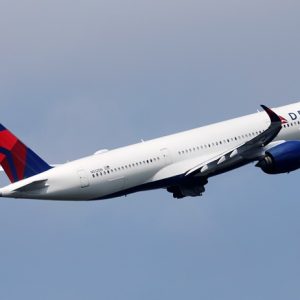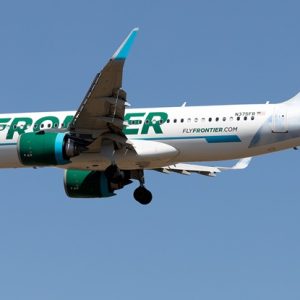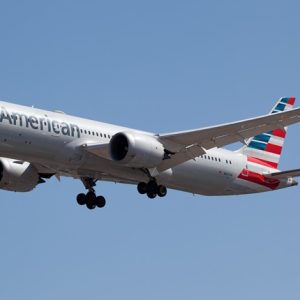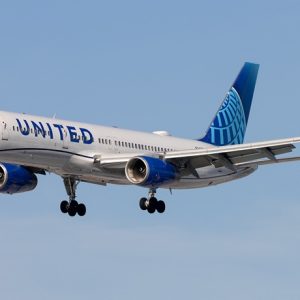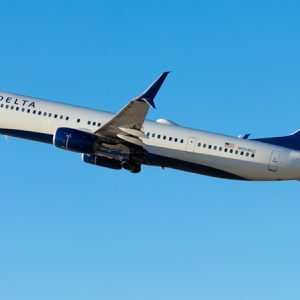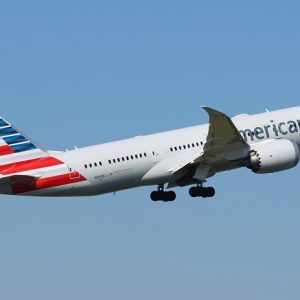
A United Airlines Boeing 777-200 operating flight UA1731 from Kona International Airport (KOA), Hawaii, en route to Denver International Airport (DEN), diverted to San Francisco early Monday morning after the crew received an open-door indication while flying over the Pacific Ocean.
The aircraft remains grounded at San Francisco International Airport, while a replacement was dispatched, arriving in Denver with a delay of around seven hours. The FAA confirmed that it will investigate the incident.
United Airlines Flight Diverts To San Francisco
The Aviation Herald reported that the aircraft was cruising at 37,000 feet when the alert prompted a descent and diversion. The aircraft landed safely at San Francisco International Airport at approximately 03:45.
A United Airlines spokesperson confirmed to Business Insider that the flight was diverted to “address a malfunctioning door sensor,” clarifying that the door was secure throughout the flight.
The flight was carrying 360 passengers and 10 crew members, and was approximately 1,150 nautical miles southwest of San Francisco when the cockpit received the false alert.
All affected passengers were accommodated on an alternate flight, operated by a Boeing 777-200 (registration N219UA), which arrived in Denver with a delay of approximately seven hours.
Flightradar24 data showed the aircraft descended below 10,000 feet over the Pacific Ocean before proceeding to San Francisco.
Descending to that altitude is standard procedure in suspected depressurization cases to ensure breathable cabin conditions.
Although the sensor was faulty, the precautionary action was necessary due to the safety implications of a possible open door mid-flight.
About The Flight And Aircraft
The diversion occurred on United Airlines flight UA1731, which is a scheduled daily service from Kona International Airport to Denver International Airport, typically departing at 19:35 with an average flight duration of six hours and 30 minutes.
According to Flightradar24, the aircraft descended approximately three hours into the flight and landed in San Francisco shortly before 04:00.
The aircraft involved, a Boeing 777-200 registered N780UA, is 28.5 years old and was originally delivered to United Airlines in 1996, according to Planespotters.net. It is configured with 28 business class seats and 336 economy seats, accommodating a total of 364 passengers.
United typically operates this high-density layout on long-haul domestic routes, utilizing its non-ER variant of the 777-200s, which are optimized for high-capacity operations rather than extended range.
United became the launch customer for the Boeing 777 in June 1995, operating its first flight with the type from London Heathrow to Washington Dulles. Since then, the 777 has remained central to the carrier’s long-haul operations.
The airline initially operated the 777-200 and 777-200ER, later adding the 777-300ER in the mid-2010s. As of now, the airline’s 777 fleet includes 74 777-200s and 22 777- 300ERs, according to Planespotters.net.
Aircraft | Total | In-service | Parked |
|---|---|---|---|
Boeing 777-200 | 74 | 71 | 3 |
Boeing 777-300ER | 22 | 21 | 1 |
Another United 777-200 Flight Forced To Return Midway
Furthermore, just hours after Flight UA1731 diverted to San Francisco, another United Airlines Boeing 777-200 operating flight UA1321 from Newark Liberty International Airport, en route to Los Angeles International Airport, was forced to return to Newark due to a mechanical issue.
The flight departed around noon local time on April 28 and was approximately 45 minutes into its journey when the crew initiated the return.
It was carrying 362 passengers and 10 crew members. Flightradar24 data shows that the aircraft circled over New Jersey for about an hour before landing safely at around 13:30.
Emergency teams were on standby during the landing but were not required to intervene.
United confirmed that the return was made as a precaution and arranged for a replacement aircraft to continue the journey to Los Angeles later the same afternoon.
The airline did not disclose the exact nature of the mechanical problem, but the affected aircraft was pulled from service for further inspection.
